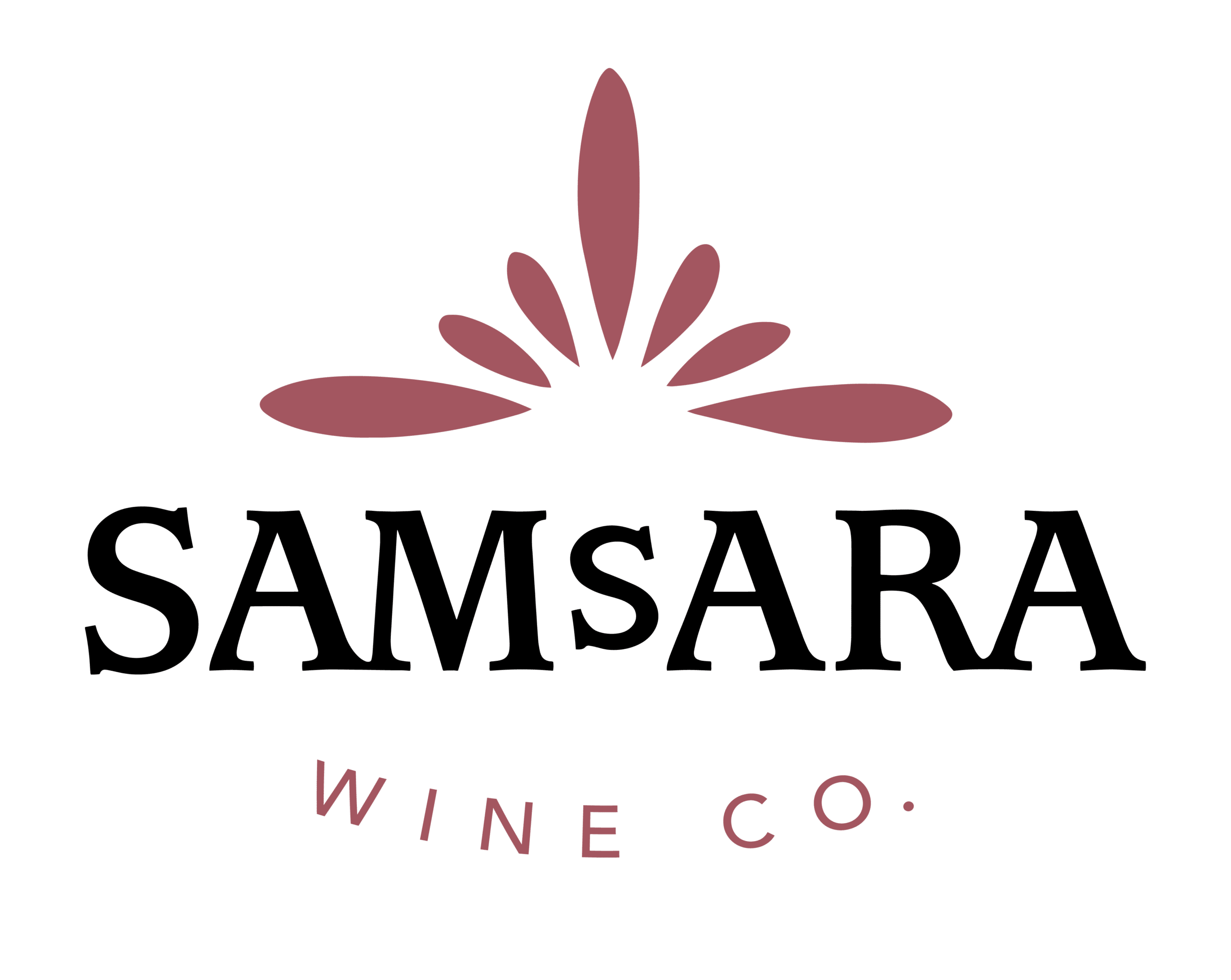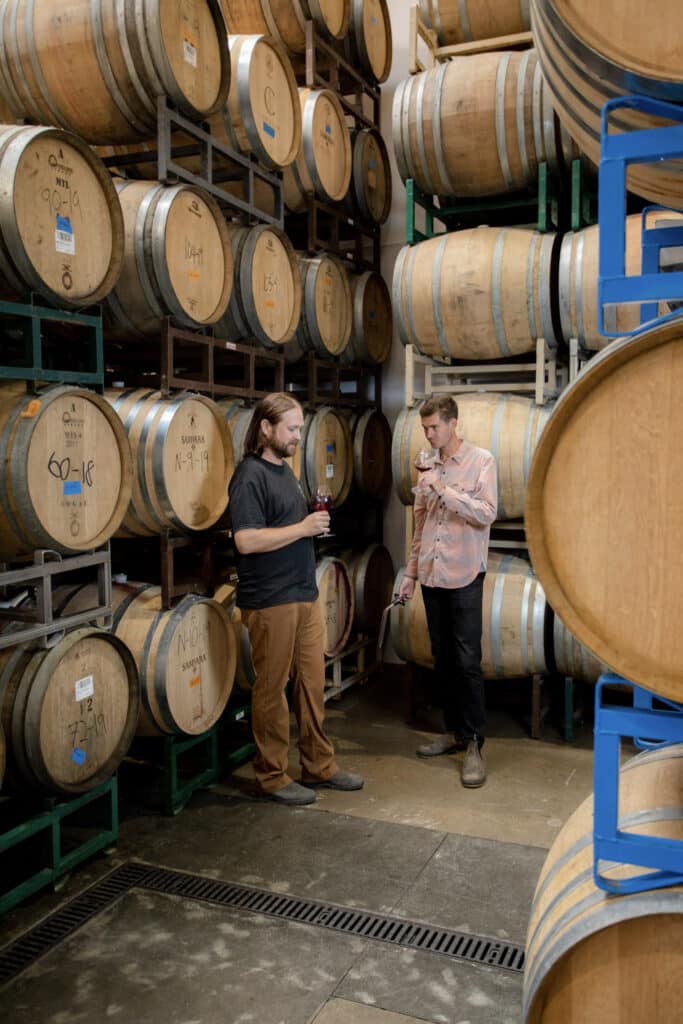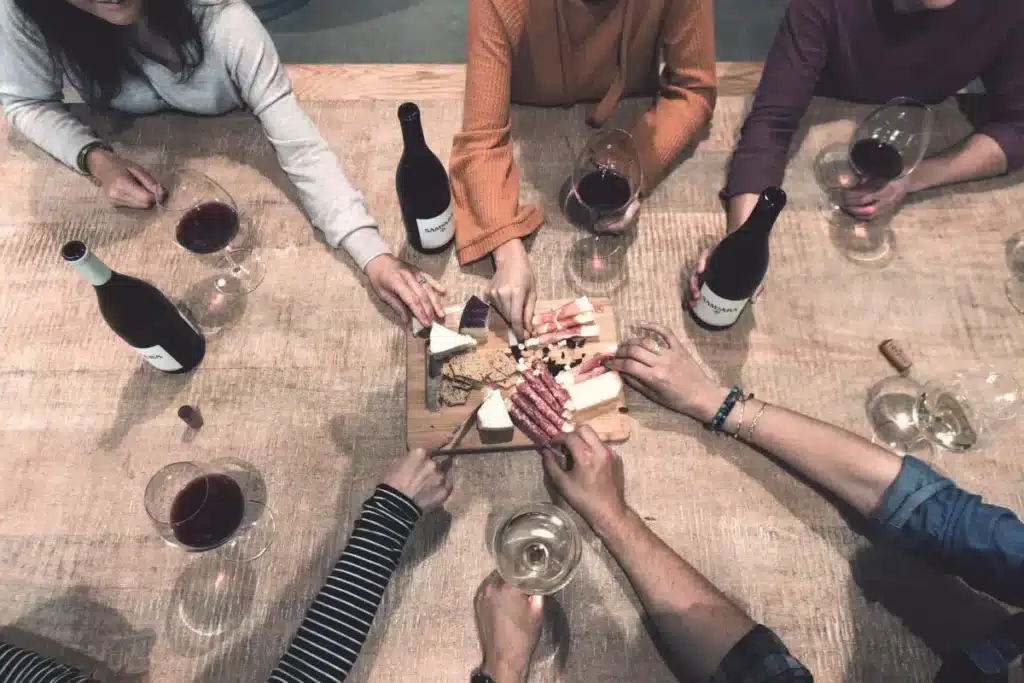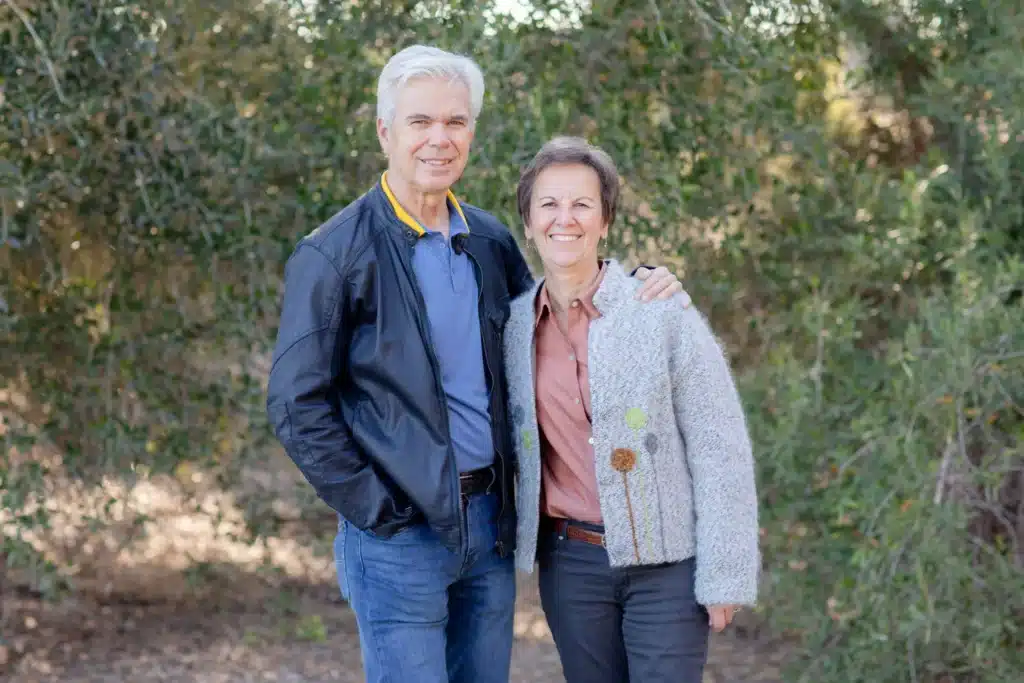No products in the cart.
Winemaker’s Update – September 21, 2018
On September 21, SAMsARA winemaker Matt Brady was interviewed by John Henigin from Santa Barbara’s Cork & Fork Radio. Check out the recording and learn about the vintage at work, whole cluster fermentation, the new winery in Goleta, and much more!
VIDEO TRANSCRIPT
Cork & Fork Radio: We have Matt on the line with us. And Matt, now, it’s been busy. You got your shoes on yet, Matt?
Matt Brady (SAMsARA): Oh, yeah. We’ve got the boots on. We’ve got grape stompers in the bin right now.
Cork & Fork Radio: Well, wait a minute. You don’t stomp grapes with –
Matt Brady (SAMsARA): We’re stomping some pinot noir as we speak.
Cork & Fork Radio: You don’t stomp grapes with boots on, do you?
Matt Brady (SAMsARA): No, no. You can clean a foot better than you can clean a boot, in my opinion. So, we kind of use – we use some citric acid and some hot water to get the feet and the legs nice and clean and then hop in.
Cork & Fork Radio: Well, let me ask you a quick question. Now, obviously when you’re making wine you’re not going to be stomping grapes by foot in your wine production, but this is kind of a special event.
Matt Brady (SAMsARA): No, that’s exactly what we’re doing, yeah.
Cork & Fork Radio: Wait a minute. But as a general rule, as you’re making wine, it’s going to go through a crusher, right?
Matt Brady (SAMsARA): We do some de-stemming as well, but really, one of the foundations of our winemaking is whole cluster fermentation, so the pinot noir, about 50 percent of it we foot stomp, stems and all.
Cork & Fork Radio: Really?
Matt Brady (SAMsARA): We’re doing that right now.
Cork & Fork Radio: You mean, as – for production you’re doing that?
Matt Brady (SAMsARA): And then, the other 50 percent we run through a de-stemmer and we don’t crush the fruit but we remove the stems and add the whole berries to –
Cork & Fork Radio: To the mash?
Matt Brady (SAMsARA): – the foot stomps component.
Cork & Fork Radio: Oh, wow.
Matt Brady (SAMsARA): It’s a blend of de-stemmed fruit and whole cluster and that’s what we’re doing right now.
Cork & Fork Radio: So, you’re commercially making wine by stomping the grapes?
Matt Brady (SAMsARA): We are, yeah.
Cork & Fork Radio: Wow.
Matt Brady (SAMsARA): Definitely –
Cork & Fork Radio: Nobody does that.
Matt Brady (SAMsARA): – an old tradition.
Cork & Fork Radio: Old tradition.
Matt Brady (SAMsARA): And wine’s been made like that for a long time, but we really like the stylistic qualities that we get from the stem inclusion, and we do it for that reason.
Cork & Fork Radio: So, you hire foot stompers?
Matt Brady (SAMsARA): We’ve got our harvest intern Jen stomping grapes right now. So, yeah, she’s a paid grape stomper.
Cork & Fork Radio: Does she have big feet? And good balance?
Matt Brady (SAMsARA): She’s kind of a tiny little thing, so it takes some extra stomping for her.
[Laughter]
Cork & Fork Radio: Okay. Anyway… By the way, Mark, we do have Ross from Imagine Wine on the line and I’d like to bring him into the conversation, make some comments, and talk about it. But I’m fascinated. It looks like we’ll wait until the next time because we won’t get out there in time after the show. But Ross, what do you think?
Ross Jay Rankin (Imagine Wine): Well, it’s labor-intensive and I understand that. And it’s – are you getting – you’re stomping them but you’re including all of the food stems there? Or, you said 50 percent?
Matt Brady (SAMsARA): Yeah, for the pinot noir that we make it’s roughly about 50 percent whole cluster with the remaining fruit de-stemmed. But historically, the Rhone wines – [beeping sound] sorry, I’m having trouble listening – historically, the Rhone wines we’ve done 100 percent whole cluster.
Cork & Fork Radio: Now, Matt, you have a facility in – where is it? – in Los Olivos or –?
Matt Brady (SAMsARA): Well, we have a tasting room in Los Olivos, and the wines used to all be made in Lompoc. So, we’ve moved the winemaking operation down to Goleta and we’re opening up a second SAMsARA tasting room here in Goleta as well. We’re shooting for October 15th for that. But we’re going to have onsite wine tasting right here at the winery. We just brought in our first fruit about two weeks ago – I guess it’s two weeks tomorrow. So, we’re still kind of finding the groove of how everything works with our new setup down here. But it’s been great so far and 2018 has really been the kind of vintage that because it’s been – the temperature has been so moderate and the weather has been so nice it’s really given us a little bit of breathing room as we’ve moved into our new facility and tried to kind of figure out how it all works here down in Goleta. But it’s been going really well and, yeah, it’s been pretty exciting.
Cork & Fork Radio: Matt, could you describe your wine for us? Is there some specialties or varietals or types that you do?
Matt Brady (SAMsARA): Sure. We do pinot noir, Grenache, Syrah. We actually just bottled our very first Chardonnays last month. And I’d say overall for the red wines, because of that big percentage of whole cluster fermentation, they’re really spicy and savory and big on mouthfeel, big on texture. More kind of spicy and savory than ripe and sweet. California, Santa Barbara especially, is a good place to be a grape. And we never have any shortage of fruit profile in our wine. So, for me, I find it more interesting to have some of those other elements beyond sweet fruit flavors to make the wines more complex and more interesting.
Cork & Fork Radio: just kind of looking at some kind of an idea of what you’re looking for in the wine that you use.
Matt Brady (SAMsARA): Yeah, we’re trying to maximize complexity. And the whole cluster fermentation where we foot stomp the grapes, stems and all, is one of the things that we do to make the wines a little bit more complex and more interesting. But everything is done in real kind of micro fermentation lots here, so we really have the ability to – for instance, the grapes that came in here today, we got four tons – three from vintners – and we’re doing them all a little bit different. And the idea is that at the end of the day when we get our 10 or 12 barrels out of these four tons they’re all going to be a little unique.
Cork & Fork Radio: Now, the process – because you see the old wooden grape presses and stomping grapes, but what – is it just a big tub that you get into and stomp around? Or, what is the vessel that you’re using?
Matt Brady (SAMsARA): Well, we ferment in two-ton, stainless steel, open –
Cork & Fork Radio: I’m talking about the stomping.
Matt Brady (SAMsARA): Yeah, that’s what I’m describing also.
Cork & Fork Radio: Okay.
Matt Brady (SAMsARA): Yeah, we ferment in two-ton, stainless steel tanks, so as we sort fruit we have a sorting table that is – it’s basically like a conveyer belt and the grapes go by on the table or on the belt and we pull out any leaves or bad clusters or anything that’s not a grape. And all the good fruit goes to the end of the table, into the bin, and somebody’s inside stomping away
Ross Jay Rankin (Imagine Wine): It’s interesting. Are you using native yeast?
Matt Brady (SAMsARA): Yeah, we – native – we use native yeast. We don’t add any yeast. It’s all fermented with the natural yeast. We do long periods of skin contact too. We shoot for about 30 days on the skins before processing.
Cork & Fork Radio: Well, we talked a little bit about yeast and sulphur naturally occurring. Are you telling me that you do not add yeast to your wine?
Matt Brady (SAMsARA): We don’t add any yeast, correct.
Cork & Fork Radio: Wow.
Matt Brady (SAMsARA): Yeah, we just do indigenous, spontaneous fermentations with the native yeast that come in on the grapes.
Cork & Fork Radio: Wow.
Matt Brady (SAMsARA): Yeah, so it takes a little bit longer for the ferments to start. Really, what’s interesting, I think, about the native fermentations is the kinetics of the fermentation. It doesn’t start super fast. Instead, it kind of builds up slowly. And since we shoot for these long periods of skin contact – you know, right around four weeks – having that slower fermentation is a positive thing for us.
Cork & Fork Radio: Okay. So, you ferment for about four weeks, is that what you said?
Matt Brady (SAMsARA): Correct. One of the advantages for us for being a small winery is we can take a lot of time. We have the space to do everything. The lot, the pinot that we picked today from Rancho La Viña Vineyard out on Santa Rosa Road in Santa Rita Hills, we got four tons of that, which is about an acre and a half. And that’s one of the bigger lots that we’ll do the entire year. Most of our picks are a lot less than that. So, being small definitely has some advantages.
Cork & Fork Radio: Okay. Well, we’re going to wrap it up. Let’s make sure we cover things. It’s – your location is Calle Real, but it’s where Calle Real goes out and intersects with Los Carneros. And it’s –
Matt Brady (SAMsARA): Yeah, right by the 101. 6485 Calle Real. We’re right across from our friends over at Captain Fatty’s Brewery. We’ve got some really good neighbors with those guys.
Cork & Fork Radio: Okay. But anyway – and then, of course – now, you said you’re not going to open for about another month, you think?
Matt Brady (SAMsARA): Yeah, the tasting room, we’re shooting for right around the middle of October.
Cork & Fork Radio: Okay.
Matt Brady (SAMsARA): But we’re in full wine production mode right now, so if anybody popped by, they could stick their head in and check it out
Cork & Fork Radio: – go, go visit Ross and get some very, very unique wines. And then, of course, samsarawine.com.




